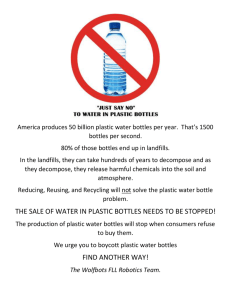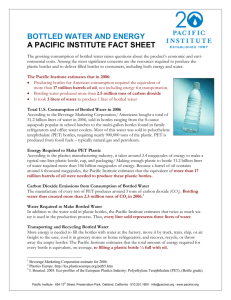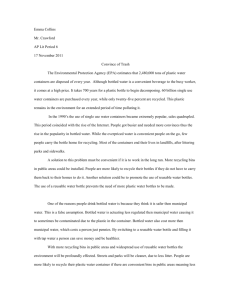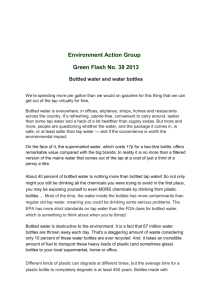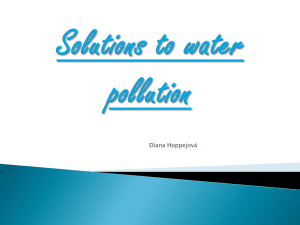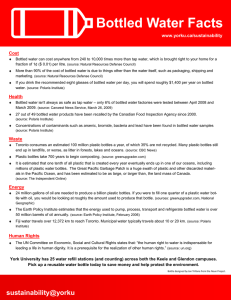The Life of Bottled Water SSL Lesson Plan
advertisement
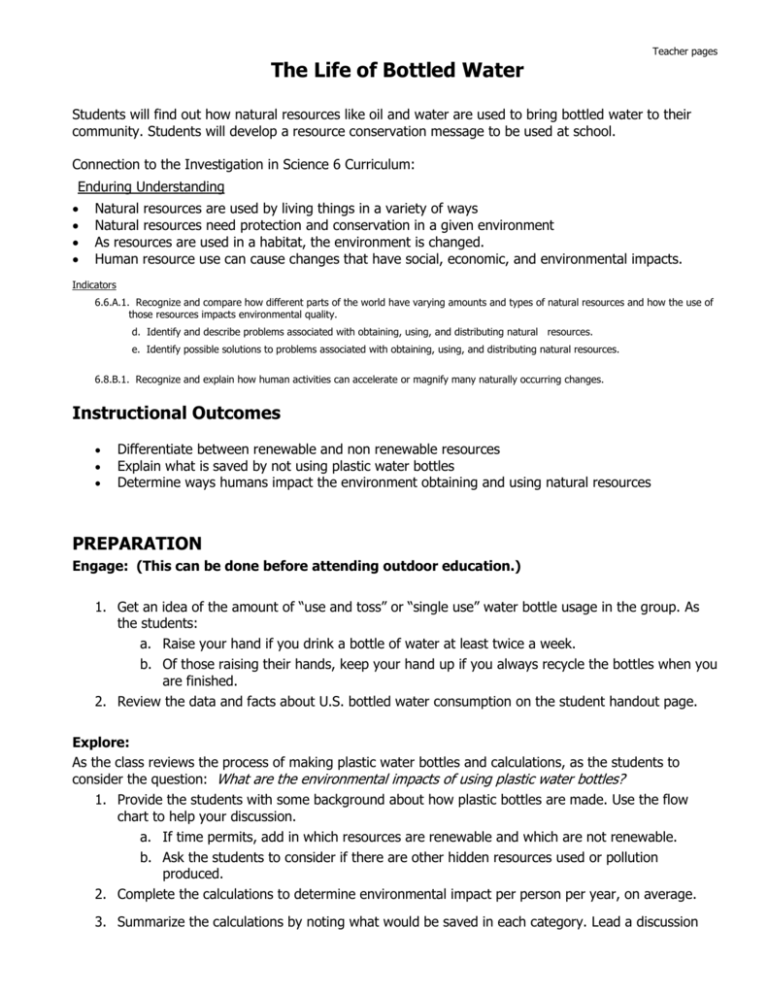
Teacher pages The Life of Bottled Water Students will find out how natural resources like oil and water are used to bring bottled water to their community. Students will develop a resource conservation message to be used at school. Connection to the Investigation in Science 6 Curriculum: Enduring Understanding Natural resources are used by living things in a variety of ways Natural resources need protection and conservation in a given environment As resources are used in a habitat, the environment is changed. Human resource use can cause changes that have social, economic, and environmental impacts. Indicators 6.6.A.1. Recognize and compare how different parts of the world have varying amounts and types of natural resources and how the use of those resources impacts environmental quality. d. Identify and describe problems associated with obtaining, using, and distributing natural resources. e. Identify possible solutions to problems associated with obtaining, using, and distributing natural resources. 6.8.B.1. Recognize and explain how human activities can accelerate or magnify many naturally occurring changes. Instructional Outcomes Differentiate between renewable and non renewable resources Explain what is saved by not using plastic water bottles Determine ways humans impact the environment obtaining and using natural resources PREPARATION Engage: (This can be done before attending outdoor education.) 1. Get an idea of the amount of “use and toss” or “single use” water bottle usage in the group. As the students: a. Raise your hand if you drink a bottle of water at least twice a week. b. Of those raising their hands, keep your hand up if you always recycle the bottles when you are finished. 2. Review the data and facts about U.S. bottled water consumption on the student handout page. Explore: As the class reviews the process of making plastic water bottles and calculations, as the students to consider the question: What are the environmental impacts of using plastic water bottles? 1. Provide the students with some background about how plastic bottles are made. Use the flow chart to help your discussion. a. If time permits, add in which resources are renewable and which are not renewable. b. Ask the students to consider if there are other hidden resources used or pollution produced. 2. Complete the calculations to determine environmental impact per person per year, on average. 3. Summarize the calculations by noting what would be saved in each category. Lead a discussion Teacher pages about why these resources are important to conserve. This could also be a place to discuss which are renewable and nonrenewable resources. 4. Stress to students that although recycling helps, resources are still used and products are ultimately made that are not recycled and end up in the landfill. The key is reduce our water bottle use. How can we do that? ACTION: 1. Students brainstorm specific messages that others at their school should receive. Use the questions under the calculations section to guide their brainstorm. 2. Students create a means to communicate a message to the school community or home about resource conservation and reducing water bottle usage. The action can be poster, a bookmark, the book cover for an imaginary book about reducing water bottle use, a comic strip or cartoon, rap song or poem, a public service announcement for school, a webcast, etc. 3. The student messages are communicated back at the local school! Materials: (Teachers should select materials depending on the project(s) of choice.) Paper Scissors Pencils, markers, crayons, etc. REFLECTION: Students write about their learning in their science or OEEP journals. This can be done during the SSL class or during free time after the session. Guiding questions for students: o What will be the final environmental benefit of your service/action? o Who will benefit from your service? o Did you learn anything about yourself? Explain. o How was your service-learning connected to something you studied at school? Students will use their reflection to help complete the SSL Activity Verification form during the SSL class or in large group as a wrap up.




